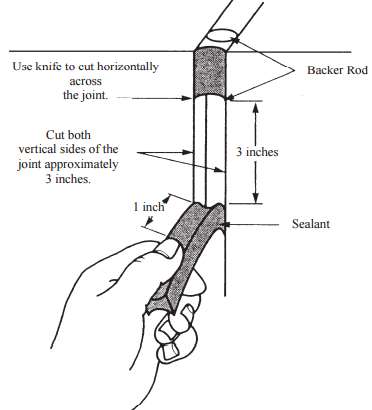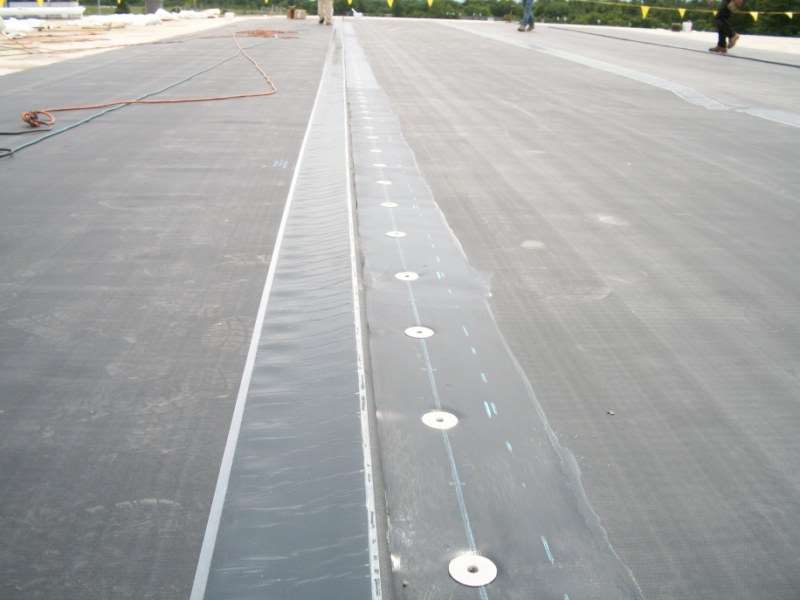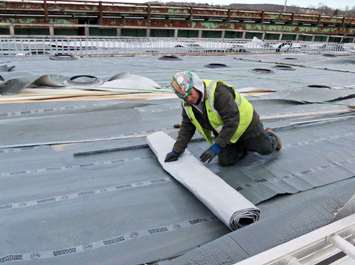It’s that time of year again, the days are shorter, the temperature is cooler, and construction season is over. Wait a minute – contractors are still working?
Despite below freezing temperatures, winter construction is possible and can be of high quality when the correct precautions are taken. While there are inevitable schedule delays due to high winds, snow and extreme cold temperatures, winter construction is feasible. In this article, we will discuss four different types of work that are commonly completed during the winter and colder months - Sealants, Flat Roofs,
Concrete Restoration, and Exterior Insulation and Finish System (EIFS). We will outline the risks associated with each type of work, as well as the appropriate precautionary measures that must be taken to ensure a quality repair.
Sealants
Generally, sealants (caulking) should be applied between 4°C and 40°C. If no precautions are taken outside of this range, the sealant may not adhere to the substrate material or the lifespan may be significantly decreased. Confirmation of sealant quality can be confirmed using field adhesion tests. To successfully apply sealant in cold weather, consider the following:
- Consult the manufacturer to determine suitable products and preparation for the expected temperatures. Some manufacturers advise the installer to heat the substrate just prior to application to achieve the desired temperature, while others prefer not to use this method to reduce risk of dew forming as the substrate cools.

-
Sealant applied at lower temperatures will usually have a longer cure time because of the increased time it will take for moisture to evaporate from the product. For example, sealants applied at -4°C may take 5 days to become tack-free, when in summer weather it would take approximately 1 day. Protection or notices should be provided so no one disturbs the sealant during the curing.
-
The substrate should always be cleaned and free of frost or moisture prior to application. To clean substrates, it is normally recommended to use MEK (methyl ethyl ketone), a high-quality solvent that is soluble in water, which can more effectively remove frost from surfaces. MEK is hazardous and should only be used on the exterior and stored safely.
-
Quality Control: Whether installing sealants in the summer or winter it is always good practice to retain a third-party consultant. The consultant should review the work in progress and also carry-out test cuts once the sealants have cured to check bond.
Flat Roofing
Flat roof repair or replacement is common and may be less expensive during the colder months, as contractors are hungry for work. Hot Applied Built-Up (BUR), Modified Bituminous (Mod Bit), as well as single ply membrane systems can be installed in cold weather and will provide a similar service life to membrane installed in warmer weather. BUR and Mod Bit systems application involve heating asphalt to bond the layers of reinforcing felts and seal joints, while TPO and PVC systems are heat- welded at seams.
To successfully install a flat roof membrane during cold weather, consider the following:
-
Consult the manufacturer and your Consultant to determine suitable products and preparation for the expected temperatures. Generally, flat roof membranes should not be installed when temperatures are below -18°C or during inclement weather. Adhesives and sealants should typically be stored above 5°C.
-
Single ply membrane systems can be secured to a roof deck using mechanical fasteners, adhesive and/or ballast. Installation of fully adhered systems should be avoided during cold weather as there is a risk the adhesive may prematurely set before proper adhesion takes place. This may result in blisters and wrinkles, increasing the probability of punctures.

- Asphalt used for BUR must be at a certain temperature at the time of application to ensure proper viscosity and adhesion. The hot asphalt temperature will decrease faster in colder weather following mop or mechanical spreader application. This will slow installation by limiting the time between application and laying of felt. Alternatively, if the asphalt cools before the felt is laid, the edges and laps may not be fully sealed, and wrinkles or blisters may develop.
Concrete Placement
If there is a probability of the air temperature falling below 5°C within 24 hours of concrete placement, special precautions are required to ensure the concrete achieves the strength and durability characteristics it was designed for. Irreparable loss of up to 50% of design strength can occur if concrete freezes before sufficient strength is developed to resist the expansive force of ice formation. To protect the concrete during the crucial early stages of curing, consider the following:
-
The reinforcement, forms and substrate should be free from dirt, ice and above 10°C prior to placing the concrete.
-
The temperature of the concrete at time the of placement should be between 20°C and 25°C, which can be achieved by heating the aggregates, water, or both.
-
Depending on the weather conditions, curing concrete may require protection from wind, an enclosure, or supplementary heat. Insulating blankets can be used to maintain temperature and humidity during the curing period. Supplementary heat can be applied with the use of an indirect heater to prevent carbonation (associated with steel corrosion and concrete shrinkage).


Exterior Insulation and Finish System (EIFS)
Temperature and weather conditions are critical to the success of Exterior Insulation and Finish System (EIFS) installation. Special attention should be given to temperature and weather conditions when completing Exterior Insulation and Finish System (EIFS) repairs or replacement. By maintaining the correct conditions during installation, issues including base/finish coat failures, improper curing, and system performance failures can be avoided. EIFS components are usually moisture-cure products, meaning they cure through evaporation and will take longer to dry in colder temperatures. Portland cement is a common adhesive used in EIFS systems and in cold temperatures there is a risk of white salt deposits forming on the surface of the EIFS during curing, called efflorescence. These salt deposits are a result of the evaporation process; in colder temperatures, the water will travel to the exposed surface to evaporate, while in the warmer temperatures the water will usually evaporate within the system before it reaches the exposed surface. To install EIFS at cold temperatures, consider the following:
-
EIFS installations should never occur when the ambient or substrate temperatures are lower than 4°C, or as specified by the product manufacturer. Furthermore, both the surface and ambient temperatures should be maintained at a minimum of 5°C for 24 – 48 hours following each application to ensure curing of each component.
-
Protection and heating of the work area may be required to produce desired installation conditions; however, this is not recommended as it relies on the installer to maintain the enclosure and temperatures even through the night. It can also pose as a fire hazard if not safely installed and monitored. The enclosure should be vented to heat fresh air and release moist air, and heat should be circulated to avoid hot/cold pockets of air. The substrate may require additional heating to maintain proper installation conditions.

- A dry storage location and protection from cold temperatures is required for all EIFS materials. It is
recommended to have the materials accessible from within the work area in a separate enclosure to prevent exposure to temperature changes when the work area is opened and when more materials are needed.
We often hear that there are two seasons in Canada: winter and construction seasons. We now know that the construction season can be extended year-round provided there are proper precautions taken. Proper quality control and third party review is critical to protecting your investment on any construction project, and even more so if you are considering winter construction. By keeping a close eye on the forecast and taking proper precautions, winter construction can produce high quality, long lasting repairs.














